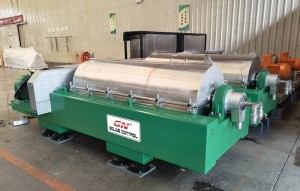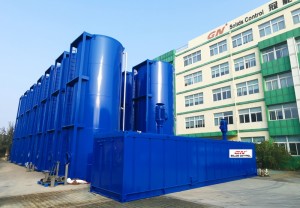Such as all other drillings, the diamond drilling is also in need of drilling mud treatment. Because of the project features that the diamond drilling jobsites are always located in different places, and the drilling machine is not so big, the compact equipment is more preferred than large ones.
Also, based on the particle size and requested separation results, the decanter centrifuges are always quite popular among end users, that’s why for the diamond drilling projects, the most popular equipment GN provided to clients are GNLW223 Decanter centrifuges. Each year, GN make and sell 30+ sets of this centrifuge model to different countries in the world.
Besides the decanter centrifuge, some clients prefers a complete mud system with several functions including coarse separation, fine separation and mud preparation by using a mud mixing hopper. Just recently, GN Solids Control has provided to a client in Chile with a complete mud recycling system for diamond drilling, including following equipment:
1. Shale shaker or first step separation. Considering the compact structure and requested treating capacity, for this system GN chooses the GNZS752F shale shaker as the first step separation, with a 1.35m2 screen area with 2 pieces of composite frame screens.
2. Decanter centrifuge. Here a high speed decanter centrifuge is used for separating out the particles from 2 to 5 microns.
3. Mud mixing hopper, which is used for adding new chemicals or lost components into the drilling mud. The mud mixing hopper and decanter centrifuge can share one pump, alternatively serving for feeding centrifuge or mixing purpose.
On client’s request, GN also matches a generator for the whole system on the same skid of the mud tank.
If you need such equipment or solutions, please contact GN Sales Team directly.









